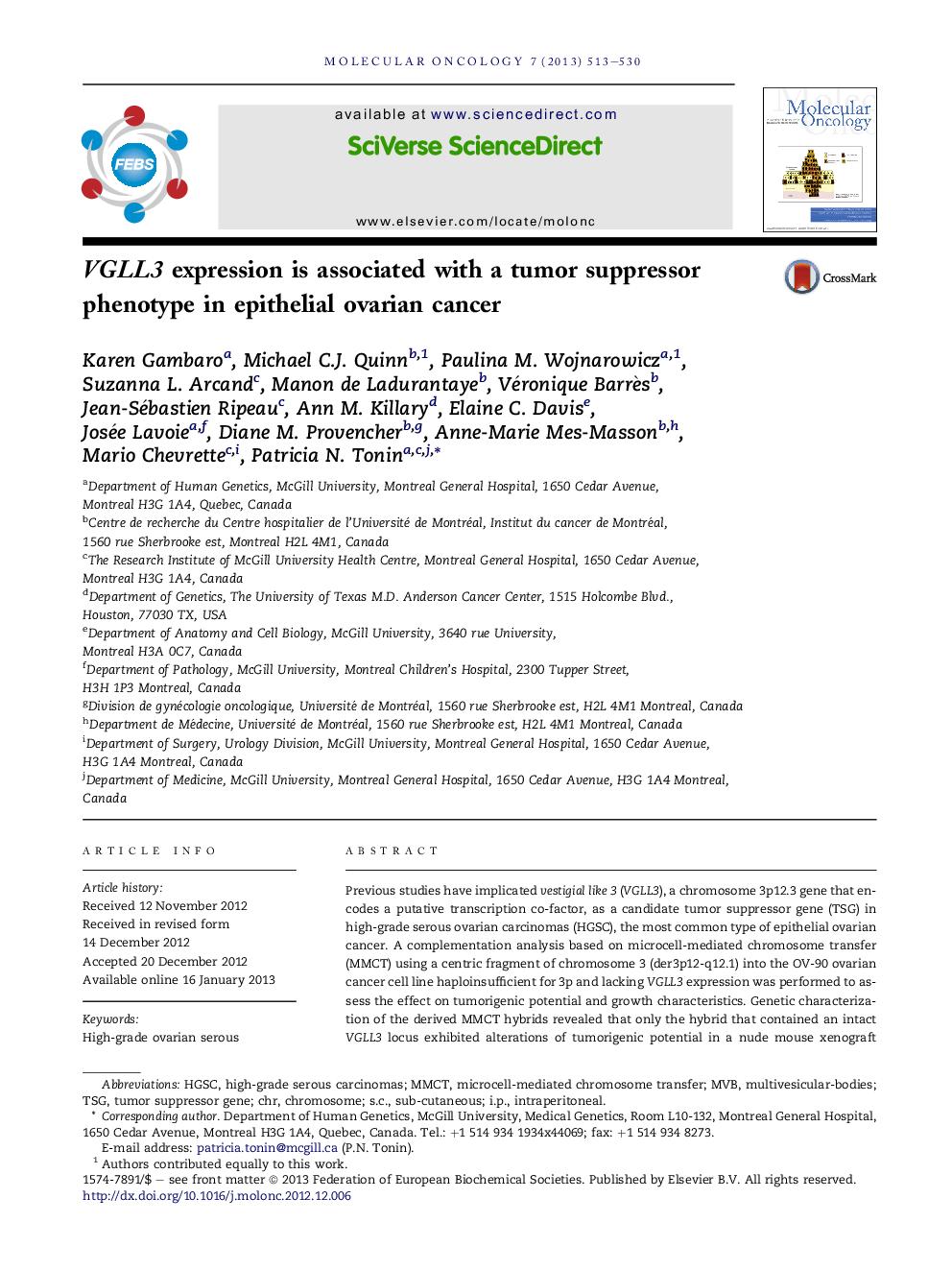| Article ID | Journal | Published Year | Pages | File Type |
|---|---|---|---|---|
| 2145720 | Molecular Oncology | 2013 | 18 Pages |
Previous studies have implicated vestigial like 3 (VGLL3), a chromosome 3p12.3 gene that encodes a putative transcription co-factor, as a candidate tumor suppressor gene (TSG) in high-grade serous ovarian carcinomas (HGSC), the most common type of epithelial ovarian cancer. A complementation analysis based on microcell-mediated chromosome transfer (MMCT) using a centric fragment of chromosome 3 (der3p12-q12.1) into the OV-90 ovarian cancer cell line haploinsufficient for 3p and lacking VGLL3 expression was performed to assess the effect on tumorigenic potential and growth characteristics. Genetic characterization of the derived MMCT hybrids revealed that only the hybrid that contained an intact VGLL3 locus exhibited alterations of tumorigenic potential in a nude mouse xenograft model and various in vitro growth characteristics. Only stable OV-90 transfectant clones expressing low levels of VGLL3 were derived. These clones exhibited an altered cytoplasmic morphology characterized by numerous single membrane bound multivesicular-bodies (MVB) that were not attributed to autophagy. Overexpression of VGLL3 in OV-90 was achieved using a lentivirus-based tetracycline inducible gene expression system, which also resulted in MVB formation in the infected cell population. Though there was no significant differences in various in vitro and in vivo growth characteristics in a comparison of VGLL3-expressing clones with empty vector transfectant controls, loss of VGLL3 expression was observed in tumors derived from mouse xenograft models. VGLL3 gene and protein expression was significantly reduced in HGSC samples (>98%, p < 0.05) relative to either normal ovarian surface epithelial cells or epithelial cells of the fallopian tube, possible tissues of origin of HGSC. Also, there appeared to be to be more cases with higher staining levels in stromal tissue component from HGSC cases that had a prolonged disease-free survival. The results taken together suggest that VGLL3 is involved in tumor suppressor pathways, a feature that is characterized by the absence of VGLL3 expression in HGSC samples.
► Microcell mediated transfer of chromosome 3p12.3-pcen affects tumorigenic potential. ► Loss of VGLL3 expression in tumors formed in vivo from transfectant clones. ► VGLL3 expression significantly reduced in high grade serous ovarian carcinomas. ► VGLL3 expressed in normal epithelial cells of fallopian tube and ovarian surface.
